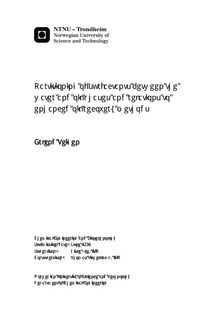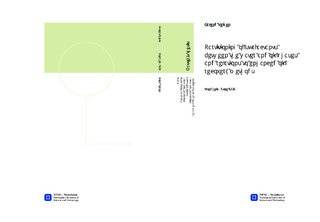| dc.description.abstract | The focus in this master thesis has been to investigate how a varying Ca2+/Na+ mole fraction affects the interfacial tension of a surfactant/brine - dodecane/toluene interface. It has also been investigated how the same systems are affected by a varying oil phase composition, stretching from pure- dodecane to toluene. Measurements regarding the pure dodecane phase have been performed during the project thesis in the autumn of 2013.
Series in which model oil composition was richest in dodecane start off with high IFT values at lower calcium content and experience a decrease followed by a rise, as calcium content increases. IFT for systems where toluene was the most abundant component in the oil phase rose as calcium fraction in the system was increased. Series with equally mixed oil phases or 75/25 wt. % in favor of either dodecane or toluene showed IFT values that were clearly influenced by both components.
Experiments proved that an increase of dodecane fraction relative to toluene in the model oil phase moved the minimum IFT point(s) towards higher calcium mole fractions. This behavior was expected from the EACN theory. Some values in the series conducted proved hard to measure, therefore a decrease in overall ionic strength proved useful in terms of finding the minimal interfacial tension for some of the dodecane/toluene series.
The IFT value of the dodecane/brine and toluene/brine systems showed not to be affected by an increasing calcium mole fraction when surfactant was removed from the aqueous solution. This indicates that the observed changes in IFT in systems where surfactant is used, is clearly an effect of interactions between surfactants and cations.
The optimal outcome has been to get a more mechanistic understanding of the oil-water interface, and the results can be used to model how a varying Ca2+/Na+ mole fraction affects the interfacial tension of an aqueous-oil system. Experimental results match exceptionally well with what is expected behavior from the EACN theory, and can be of high interest to further research related to combined surfactant- and low salinity flooding in relation to EOR. | |

